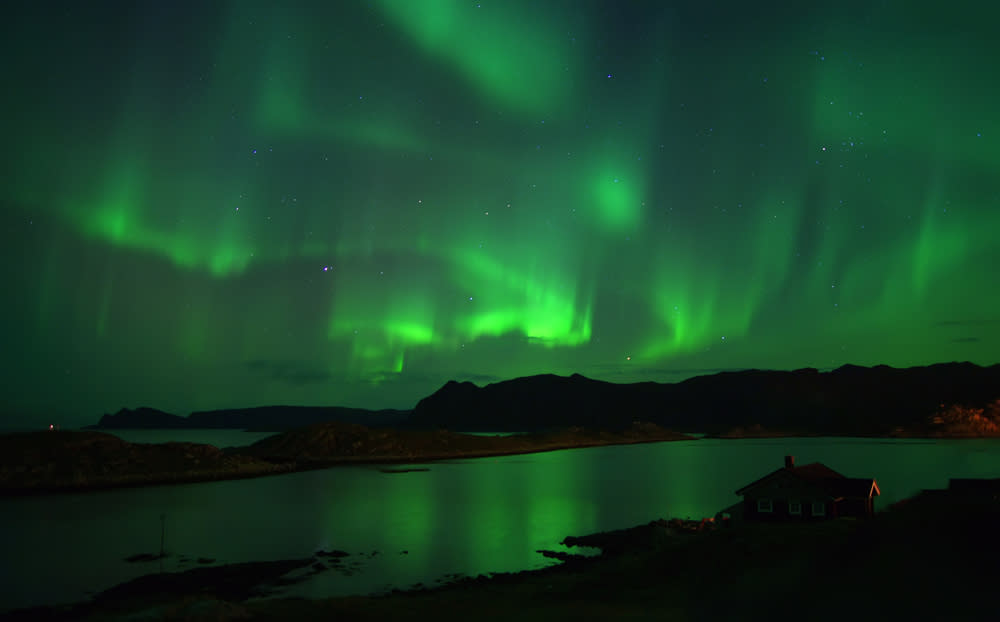More from North Cape
Main Menu
- 00:00
- 06:00
- 12:00
- 18:00
- 23:00
North Cape : Next 24-Hour Weather
Today - 23rd April 2025
Sunrise 03:17
Sunset 21:14
Tomorrow - 24th April 2025
Sunrise 03:17
Sunset 21:14
Holiday Weather Now
Sorted by popularity:
Updated at 20:00 GMT
-
Temp feels like-4°C25°F
-
Length of day17h 57m
-
Pressure30" (1017 hpa)
-
Visibility10 km (6miles)
-
Wind speed27 km/h
Sunrise 03:17
Sunset 21:14
-
Temp feels like:
-4ºC (25 ºF)
-
Length of day:
17h 57m
-
Pressure:
30" (1017 hpa)
-
Visibility:
6 miles (10 km)
-
Wind speed:
27 km/h
North Cape (or Nordkapp as it is known in Norwegian) is located on top of a 307metre-high cliff and is reputed to be Europeâs northernmost point which, in turn, makes it one of the prime tourist destinations in Norway. However the actual northernmost tip of Europe lies two miles to the west and 1500metres north of Nordkapp and is called Knivskjellodden.<?xml:namespace prefix = o ns = "urn:schemas-microsoft-com:office:office" />
Due to its position 700 miles within the Arctic Circle, North Cape experiences an arctic climate with summer temperatures not much above 10°C at best; while, in winter, the temperature tends to stay under 0°C.
Just beyond North Capeâs coast is where the Norwegian Sea in the Atlantic Ocean meets the Barents Sea of the Arctic Ocean. The warming currents from the North Atlantic Drift prevent Nordkappâs surrounding water from icing over while also regulating the winter cold on land (the winters are still freezing but it must be a comfort to know it could be colder).
A significant portion of the precipitation in this area falls as snow (which is prevalent throughout most of the year), so, even you decide to holiday there in summer, it is advisable to take coats, hats and wooly jumpers. Depending on the forecast, waterproofs may come in handy too.
Every year, North Cape has a âmidnight sunâ in summer (when the Sun remains visible in the sky for 24 hours each day) and a âpolar nightâ in winter (when the Sun doesnât rise over the horizon and darkness lasts all day). North Cape only experiences these periods of constant sunlight or dark for several weeks at the heights of summer and winter, whereas, by contrast, the North and South Poles only have one sunrise and sunset every year with six-month days and nights.
North Cape is also privy to the spectacular spectacle of the Aurora Borealis, sometimes known as the Northern Lights. On certain clear nights (often in winter) when solar winds collide with Earthâs magnetosphere, waves of green and red light are draped delicately across the sky. The Northern Lights are easier to see without a full moon and during the darkest months, between November and February.
Summer
The midnight sun begins on the 11th of May in North Cape and proper night returns on the 31st of July. The average high to low temperature ranges for June, July and August are 6-8°C, 10-13°C and 9-11°C respectively, which is by no means beach weather. Summer sees slightly less rain and, especially between June and August, there is a chance that the snow will recede.
Winter
Winter is not much colder than summer; December, January and February endure average temperature ranges of -3 to 0°C, -4 to -1°C and -4 to -2°C respectively. The first snow usually falls in October and, due to the volume of snow, the road to North Cape is closed from November to April (although it can still be reached via snowmobile). The polar darkness descends on the 18th of November and lifts on the 24th of January.

















